The Hazy Fallout of Indonesia’s Massive Wildfires
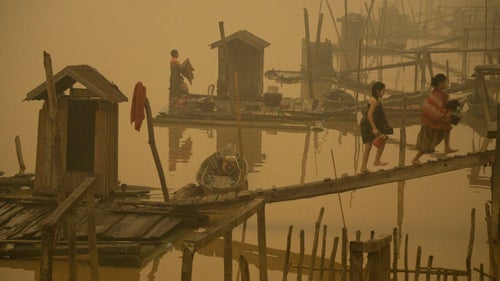
Wildfires of unprecedented size have been burning through the lush forests of Sumatra and Borneo in Indonesia since August. The government has no idea how to control them, and the mounting damages are staggering. The release of carbon dioxide, methane, and nitrous oxide gasses is more than triple the annual amount for the country, surpassing Japan and Germany in emissions, according to the . Plus, El Niño is from the islands.
Greenpeace Southeast Asia that the blazes were intentionally set by palm oil and pulp farmers carrying out slash-and-burn agriculture. Rampant draining of the swamp-like peatlands before the fires started has exacerbated the issue by effectively turning the areas into tinderboxes of dry organic material. The burns, which can reach as far down as ten feet below the surface, have sent large amounts of smoke into the air, blotting out sunlight and sending a haze as far as Malaysia and Singapore several hundred miles away. They’ve also reportedly caused over 500,000 cases of acute respiratory infections, .
Greenpeace commissioned photographer Ardiles Rante to document just how severe the village of Sei Ahass in Borneo has been affected. The organization has also called for a halt to current logging, the re-flooding of drained peatland, and for publicly accessible mapping of current harvesting, which it has been linked to the greatest burned areas.
Photo: Two women carry buckets of silverware in Sei Ahass. “They go to the river to perform daily activities—washing dishes and clothes,” says Rodrigo Estrada, a media officer for Greenpeace U.S. “The little houses are owned by each family.”
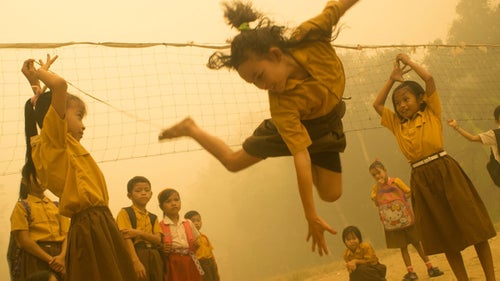
The health hazards caused by the fires are particularly harsh on children, Estrada says. “It will take several years to understand how this has affected their growth and other complex heart and respiratory diseases. It’s a difficult assessment to do at the moment.”

Long-tailed monkeys sit in trees on the banks of the Kapuas River in Sei Ahass. “The haze makes it difficult to breathe, which reduces their activity during the day,” Estrada says.
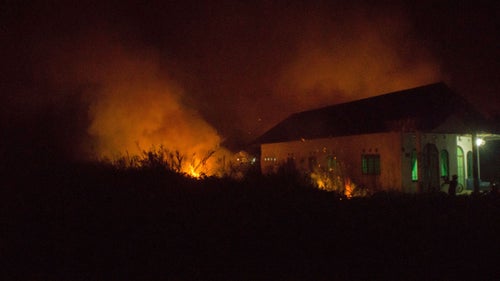
“The fire comes close to the houses and villages,” Estrada says. “The peat goes under the houses, so the fire can also travel underneath. It’s not just what you see above ground, but also underground. It’s like a furnace.”
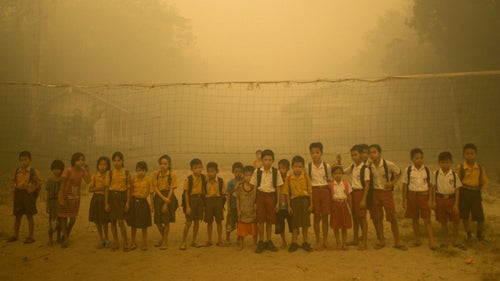
While this year’s fires are unprecedented, smoke has become an annual expectation: “For the past 18 years during the dry season, ever since the palm oil plantations began, the haze has always been lurking,” Rahmi Carolina, a 22-year-old Indonesian student, .
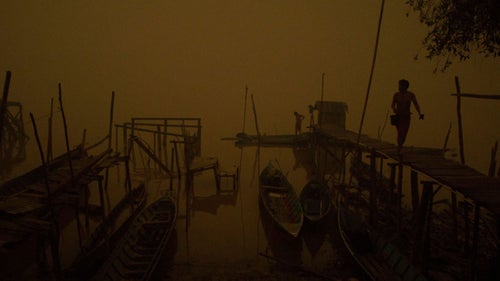
The Kapuas River is essentially the main highway for locals in Sei Ahass. Boats are the main source of transportation and are also key for fishing, a common activity.
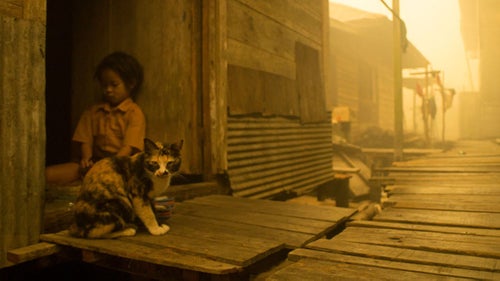
Some fires were allegedly started to prepare the ground for palm oil farming but, , government investigations into the causes of the fires have stalled.
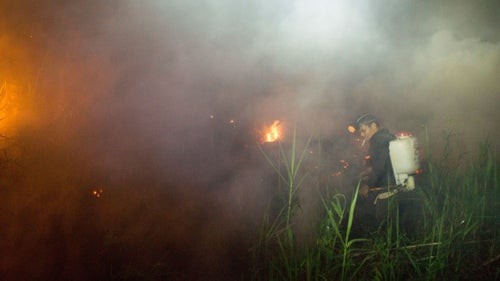
A local resident sprays down a fire near his community in Sei Ahass. “What they’re trying to do is re-moisture the peatland so it won’t burn,” Estrada says.
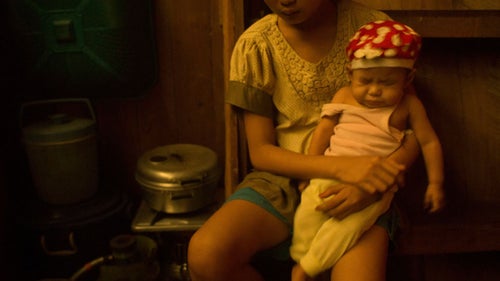
Thirteen-year-old Emma holds her seven-month-old brother, Abing, in Sei Ahass.

The Kapuas River in Sei Ahass. “The people depend on the river for communication, as well as for economic reasons,” Estrada says. “They’re trying to continue with their regular life, but it’s very hard to do so.”